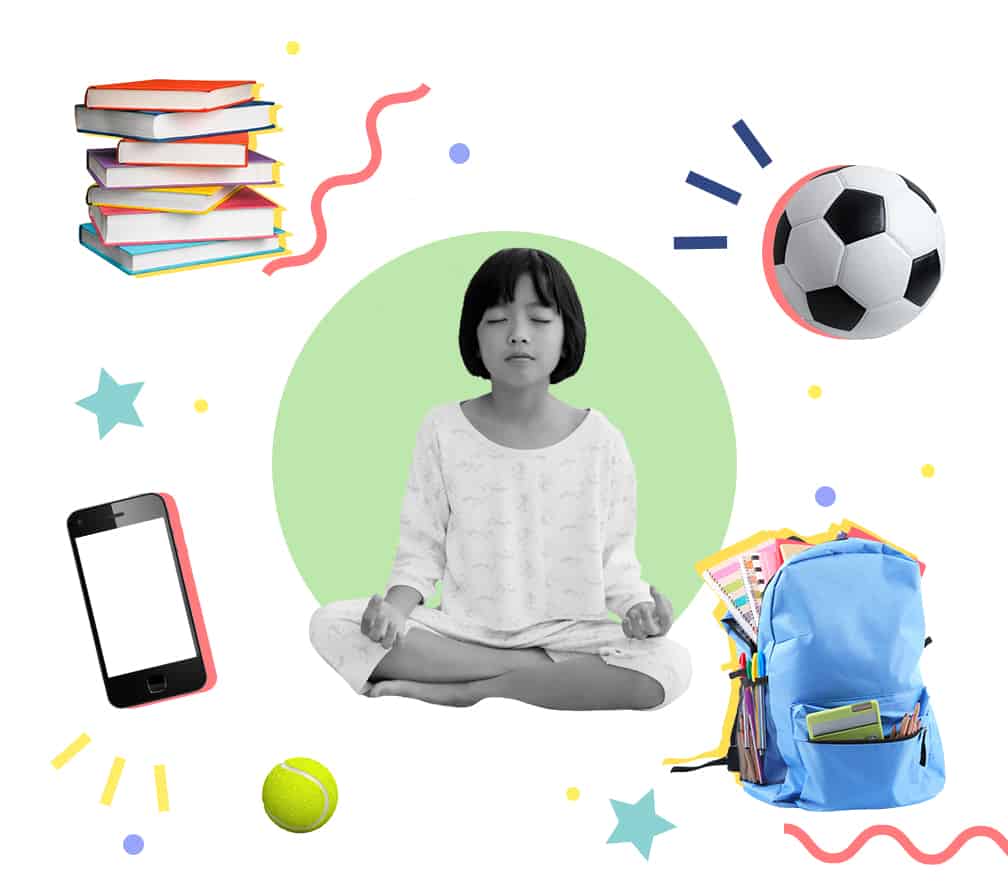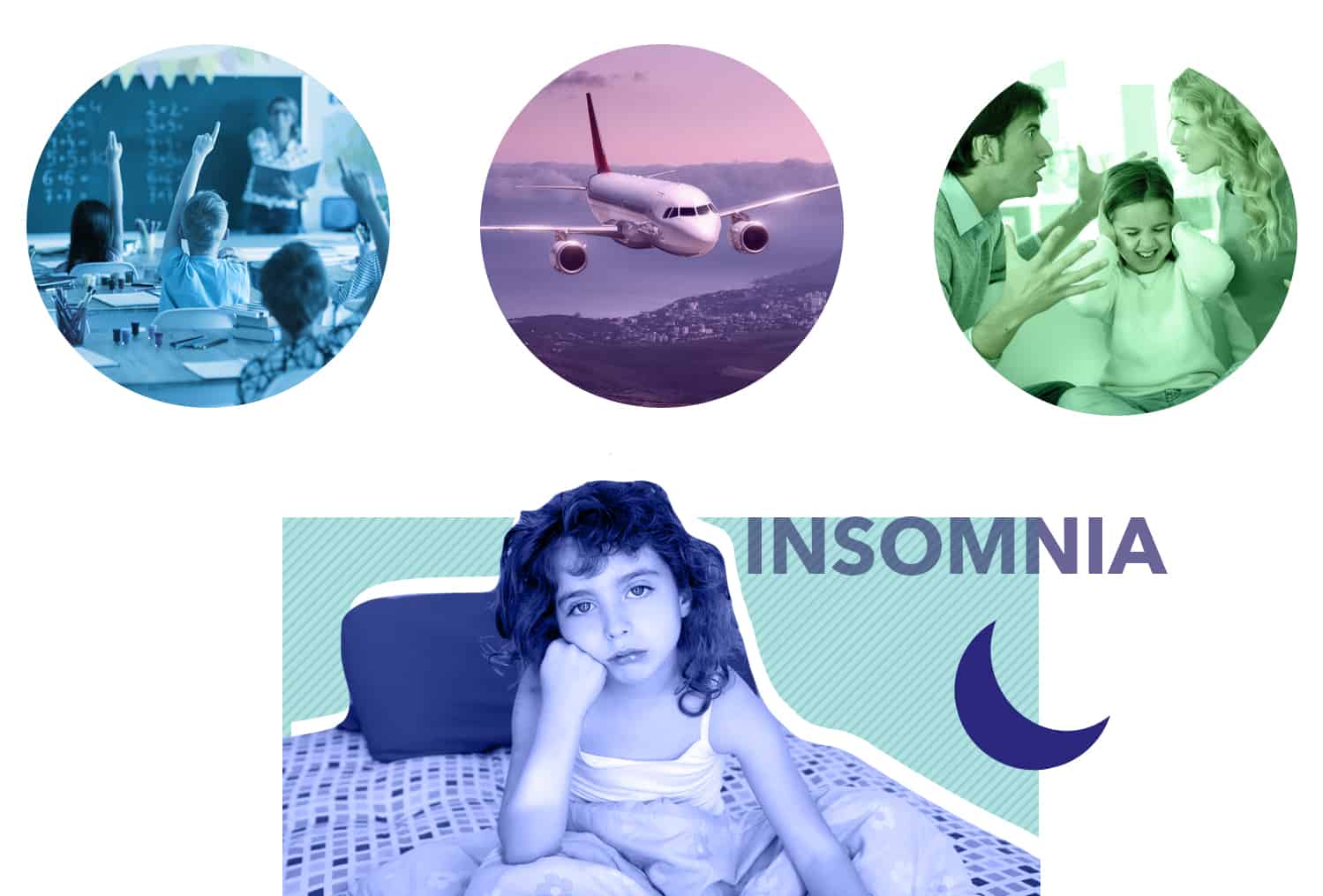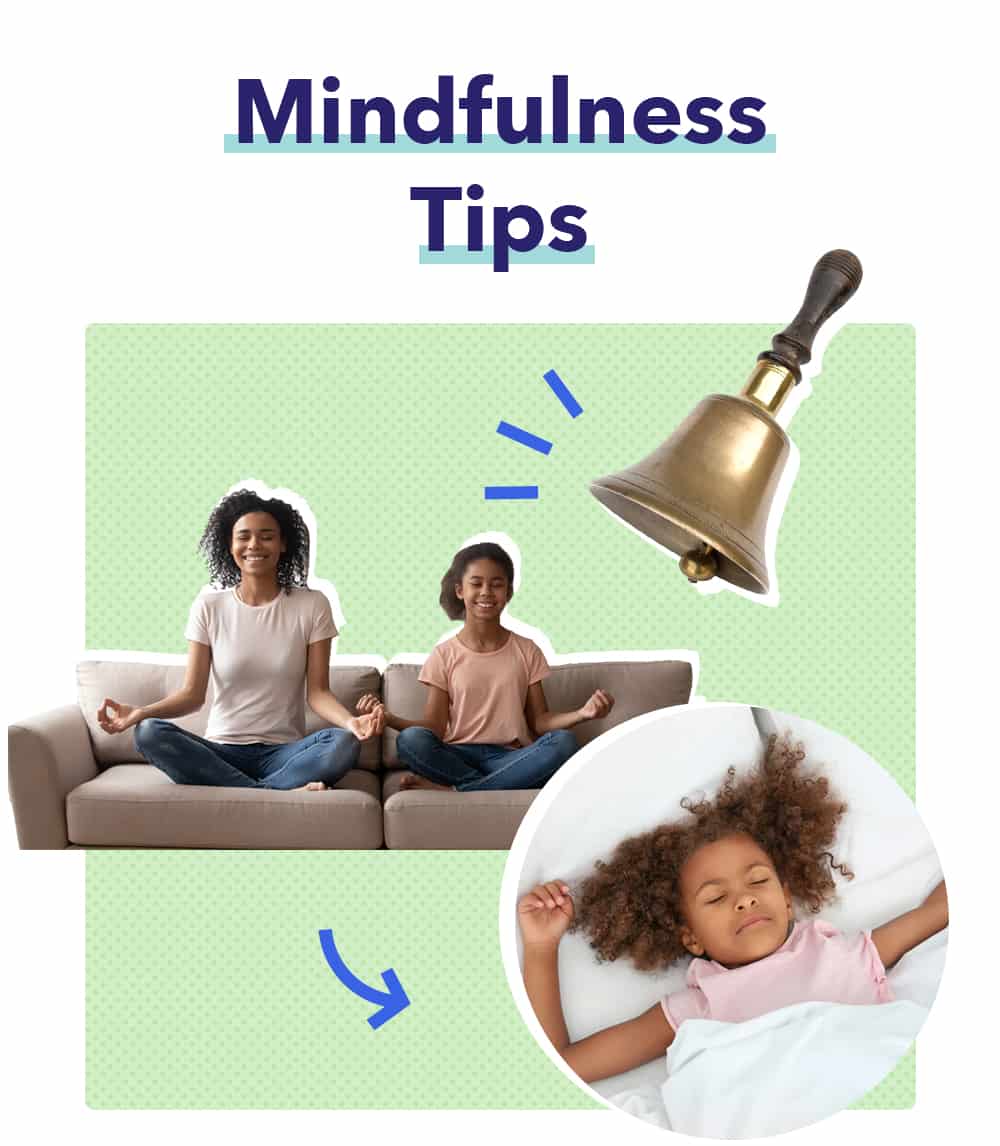The concept of mindfulness has ancient Eastern religious roots, but has become widely accepted in many Western cultures. Mindfulness is a form of active awareness and consciousness. The goal of mindfulness is to tune into thoughts, feelings, and experiences in the moment, releasing the past and future so that only the present exists.
Research shows that mindfulness can provide a positive outlet for anxiety in both adults and children. Though mindfulness stems from meditation, it is a distinct practice in itself. Meditation often leverages techniques such as chanting or focusing on a single thought to achieve enlightenment. Mindfulness encourages awareness, observation of feelings and sensations, and nonjudmental acceptance of the present as it is.

Note: The content on Sleepopolis is meant to be informative in nature, but it shouldn’t take the place of medical advice and supervision from a trained professional. If you feel you may be suffering from any sleep disorder or medical condition, please see your healthcare provider immediately.
The Impact Of Mindfulness on Insomnia
In recent decades, researchers, medical professionals, and parents have become more aware of the positive impact of mindfulness on anxiety and insomnia. The practice of mindfulness can help alleviate anxiety and insomnia, and is free of the risks of sleep-promoting medications such as hypnotics. (1)
Transient acute insomnia is often associated with a life transition, such as a new job, move, or change in family circustances. Transient insomnia lasts less than three months, and typically resolves on its own without treatment.

Chronic insomnia can begin with transient insomnia triggered by stress, a medical condition, or jet lag. The inability to sleep may cause additional anxiety, hyperactivating the nervous system, triggering the release of stress hormones, and making insomnia even more likely. Many chronic insomnia sufferers become conditioned to feel anxious about sleep and bedtime rituals, such as showering and switching off lights. This pattern of anxiety and sleeplessness can continue for months or even years.
The stress associated with chronic insomnia can’t be addressed by the use of medication or good sleep hygiene, but is accessible through other treatments. For adults, cognitive behavioral therapy for insomnia, or CBT-I, is the first-line treatment for insomnia lasting three months or longer. (2) A modified version of CBT-I has been shown to be effective in children and adolescents, as well. The CBT-I protocol typically includes relaxation training that incorporates elements of mindfulness. (3)
FAQ
Q: What is cognitive behavioral therapy for insomnia, or CBT-I? A: CBT-I is a protocol of non-drug treatments that have been proven very effective for all types of insomnia. Elements of the protocol include restricting the amount of time spent in bed and retraining the mind to associate the bed with sleep.The Benefits of Mindfulness for Children
The Child Mind Institute reports that almost a third of adolescents suffer from an anxiety disorder. Anxiety is the most frequent cause of insomnia, and is becoming more common in both adults and children.
Though the majority of mindfulness studies have been conducted on adults, existing studies on children and adolescents are largely positive. (4) The age of the child is an important consideration. Children must be developmentally ready and capable of self-awareness to understand the principles of mindfulness. This stage of development generally occurs between the ages of seven and twelve, though children at the young end of this range may be limited in their ability to hypothesize or imagine certain outcomes.
Studies on children and mindfulness for insomnia are limited, but existing research shows that the majority of children who practice mindfulness feel better able to manage their emotions. Feelings of anxiety decrease, while feelings of calm increase. Adolescents who are mindful experience greater well-being, as well as less negativity and social anxiety.
Social anxiety
The fear of interaction with other people in a social setting.
How to Practice Mindfulness With Your Children
The most effective way to teach a child mindfulness may be to model it as a parent. Your own practice can make mindfulness seem more accessible to children, and inspire them to learn the principles of mindfulness themselves. Moreover, your mindfulness can help you better understand what your child is feeling and how to help them regulate their emotions.

Making mindfulness fun can encourage your child to enjoy the process and feel confident as they learn. Talking, quiet time, unplugging from technology together, and mindful breathing are good places to start. To teach children about mindfulness, try some of the following tips:
- Help your child understand what mindfulness is using terms they can understand. Mindfulness is about letting things be, rather than labeling them as positive or negative. Your child can practice awareness of his or her senses, thoughts, and feelings through nonjudgmental observation
- Make the purpose of mindfulness clear. Mindfulness is a tool that children can use when they feel anxious, need to sleep, or want to take a mental break. Mindfulness isn’t used as discipline, but as a personal way to manage stress and anxiety
- Create mindfulness rituals with your child. This may mean practicing together at the same time every day, creating a quiet, comfortable environment, or ringing a bell just before the practice begins. A few minutes of mindfulness can become part of your child’s bedtime and morning routine
- Talk with your child about your experience of mindfulness. Describe why you decided to begin, how mindfulness has impacted you, and the challenges you’ve encountered during your practice
- Once practice begins, encourage your child to sit quietly with eyes closed and notice their breathing. They can observe sounds, feelings, thoughts, and sensations, and let everything pass without judgment or the need to respond
- Let your child know that mindfulness can be practiced anywhere, whenever they have a free moment. This might include the school bus, on breaks at school, just before a test, or at home in the evening. The calming effect of mindfulness often lasts long after the practice is over, allowing your child to feel less anxious overall and helping them sleep at night
- Ask your child how they feel about mindfulness. Correct any misconceptions and help them remain positive and nonjudgmental in their practice
- Make mindfulness a family activity. Practice together on weekends and vacations as well as during more stressful times during the school year
- Encourage your child to tell you about three things they noticed during the day because of their newfound ability to observe and be aware. What is something they saw or experienced that they missed before they practiced mindfulness? What do they remember today that they might have forgotten in the past?
- Keep track of your child’s progress with sleep and mindfulness. Are they falling asleep faster? Is the quality of their sleep better? Do they feel more rested and alert during the day?
FAQ
Q: How long should the practice of mindfulness last? A: Mindfulness experts recommend starting with a few minutes and working up to approximately 20 minutes, or as long as the session feels comfortable for you and your child.Last Word From Sleepopolis
Mindfulness can be an important tool to help a child focus, reduce stress, and sleep better at night. Though more research is needed on mindfulness and sleep in children, the science supporting the anxiety-reducing effects of mindfulness in adults is strong.
Mindfulness has no risks or side effects, and can be practiced as a family or by the child when alone at school or in bed before sleeping. Unlike medications, mindfulness can offer a long-term solution to anxiety and difficulty sleeping, and can help your child feel more in control of their lives and emotions.
References
- Jason C. Ong, PhD, A Randomized Controlled Trial of Mindfulness Meditation for Chronic Insomnia, Sleep, September 1, 2014
- Jason C. Ong, Rachel Manber, Combining Mindfulness Meditation with Cognitive-Behavior Therapy for Insomnia: A Treatment-Development Study, Behavior Therapy, June 2008
- Ong J, Sholtes D., A Mindfulness-Based Approach to the Treatment of Insomnia, Journal of Clinical Psychology, November 2010
- Wall RB., Tai Chi and mindfulness-based stress reduction in a Boston Public Middle School, Journal of Pediatric Health Care, July-August 2005


























